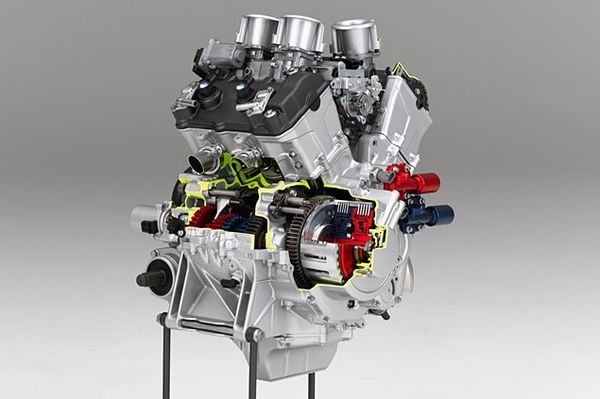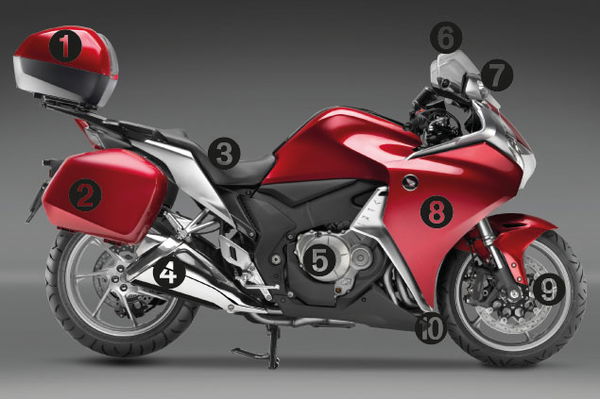How does the DCT on the Honda VFR1200 work?
The new VFR1200 features Dual Clutch Transmisson, we investigate the benefits of it

I have to admit images of a CB400 Hondamatic sprang to mind when I first heard about this new DCT system. How wrong…
First clue that there’s something amiss is the lack of gear pedal and clutch lever. Then you spot the handlebar mounted handbrake device and flappy paddles.
What the system allows you to do is select between full auto or full manual. Auto has two settings – comfort or sport.
Start the bike up and neutral is automatically selected. You then have to make your choice using the right hand switch – comfort or sport? Touching either of the two flappy paddles (up-shifts with your finger, down-shifts with your thumb) overrides the automatic mode and lets you make the call on when and how it shifts.
In operation it’s amazingly good. Smooth, fast, drama-free, predictable and slick. On the track I tried really hard to assess the two automatic modes but, to be honest, as good as it may be, on a race track it’s crucial that the rider makes the gearshift decisions.
On the road, though – the DCT system really came into its own allowing more brain capacity to be used for absorbing everything going on around and about.
I also found the DCT bike physically less challenging to ride as it removes the need for you to blip the throttle for downshifts and obviously there’s no clutch pulling to do, too. And when you’re braking, repeatedly hard enough to really tax your forearms, anything that reduces that effort is a good thing in my book.












